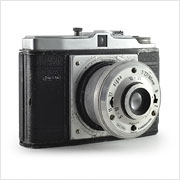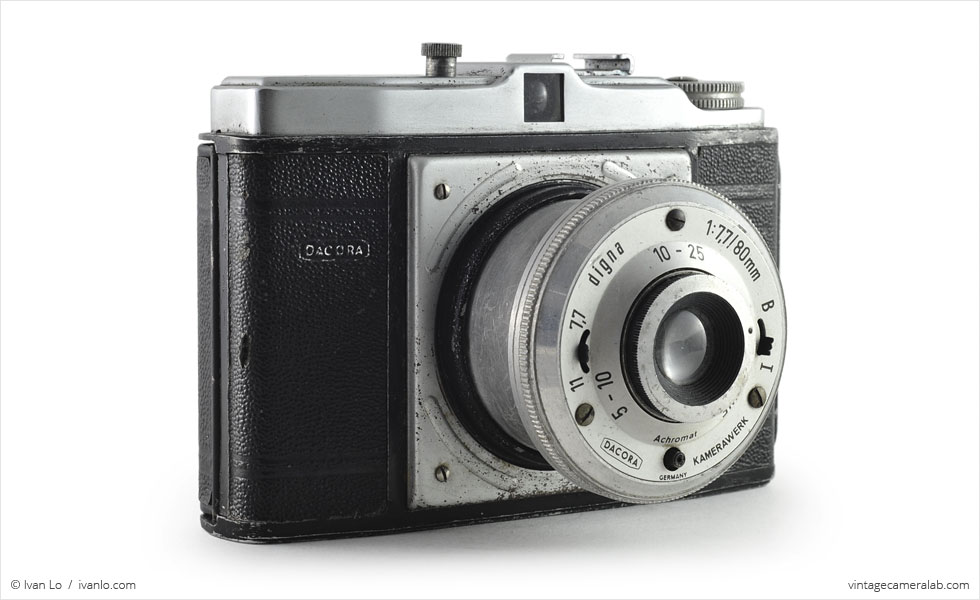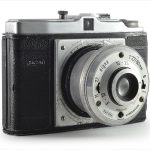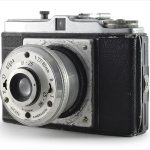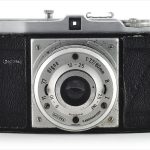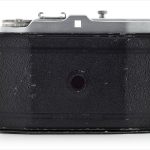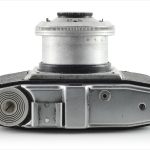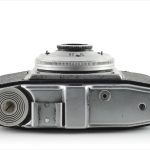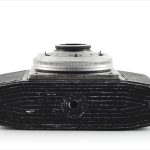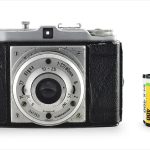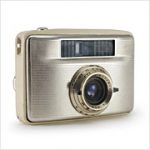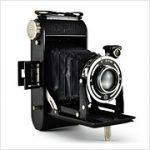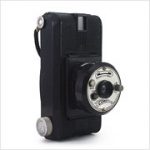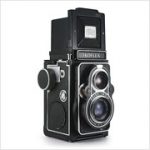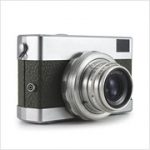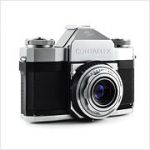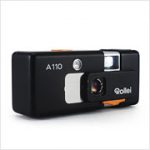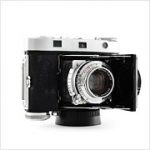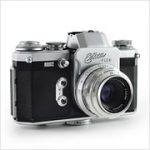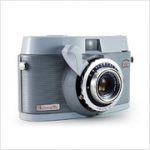Dacora Digna Specifications
| Manufacturer: | Dacora-Kamerawerk |
| Origin: | West Germany |
| (modern day Germany) | |
| Made in: | Reutlingen, West Germany |
| (modern day Germany) | |
| Introduced: | 1954 |
| Type: | Viewfinder |
| Format: | 120 Film |
| Dimensions: | 13.2 x 9 x 5.8 cm (closed) |
| 13.2 x 9 x 8.3 cm (open) |
Dacora Digna Overview
The Dacora Digna is a medium format fixed-lens viewfinder camera introduced by Dacora-Kamerawerk in 1954. There are several variants of the Digna with different lenses ranging from the relatively high-end Enna Correlar 80mm f/2.9 to more basic offerings like my example’s Dacora 80mm f/7.7 Achromat. The Digna was also sold as the Ilford Sporti in the British market.
The Digna employs a spring-loaded telescoping lens which can be extended by rotating the lens barrel counterclockwise. Once released, the lens’ focus can be adjusted by rotating the ring immediately surrounding the front element. Two toggles on either side of the front element choose between two shutter speeds (B for Bulb and I for instant) and two apertures (f/7.7 and f/11). A flash sync socket is located at six o’clock on the front of the lens barrel.
A film advance knob can be found on the user’s far left hand side of the top plate followed by a cold shoe, viewfinder, and shutter button with threaded cable release socket. The stylish film door release latch is found on the left side of the camera, a red window is on the back, and a tripod socket is located on the Digna’s bottom plate.
I bought this Dacora Digna together with several other inexpensive German cameras through eBay. The cosmetic condition is far from perfect but not bad considering its age. In terms of mechanical shape, the “instant” shutter speed unfortunately doesn’t work but everything else does. The spring that extends the lens has also retained a surprising amount of tension.
Find your very own Dacora Digna on eBay.
McKeown, James M. and Joan C. McKeown’s Price Guide to Antique and Classic Cameras, 2001-2002. (Grantsburg, WI, USA: Centennial Photo Service, 2001), p 168.
